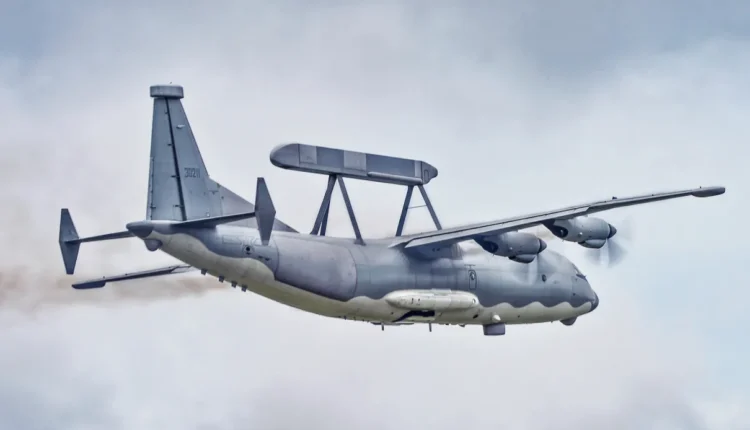China Deploys Long-Range Jammer Aircraft, Y-9LG (High 13) EW/ELINT to Thailand
The deployment of the highly strategic Y-9LG, also known as "High 13," which typically operates behind the scenes for EW/ELINT missions, underscores the close defense ties between Thailand and China.

(DEFENCE SECURITY ASIA) — During the recent “Falcon Strike” joint air exercise between the Thai and Chinese militaries at the Royal Thai Air Force (RTAF) base in Udon Thani, which took place from August 19 to 29, China for the first time deployed an Electronic Warfare/Electronic Intelligence (EW/ELINT) asset.
The deployment of this highly strategic and typically covert airborne asset underscores the deepening defense relationship between the two nations.
Despite being a signatory to a treaty with the United States, Thailand maintains a close defense relationship with China and is a major user of Chinese-made defense systems.
Thailand has procured a range of Chinese defense systems, including warships, armored vehicles, tanks, air defense systems, and more.
The special mission aircraft, identified as the Y-9LG or “High 13,” was one of 13 Chinese combat aircraft participating in the joint air exercise.

The Y-9LG, which only entered service with the Chinese Air Force two years ago, was developed from the Shaanxi Y-9 turboprop aircraft, with development starting in 2017.
The aircraft is easily recognizable by its “balance beam” antenna, similar to that of the Saab-developed AEW (Airborne Early Warning) “Erieye” aircraft, as well as China’s own KJ-200 AEW aircraft.
Thailand also operates the “Erieye” AEW aircraft, which it acquired alongside its JAS39 Gripen C/D fighter jets.
In addition to the “Balance Beam” antenna, China’s Y-9LG EW/ELINT aircraft is equipped with a Satellite Communications (SATCOM) dome, SIGINT (Signal Intelligence) antennas, and Electronic Support Measures (ESM) antennas.
The Y-9LG is primarily known as a “long-range jamming” platform, designed to disrupt and intercept enemy electronic systems and equipment.

Besides the Y-9LG special mission aircraft, the Chinese Air Force also sent J-11 fighter jets, including both single-seat and dual-seat variants, to the “Falcon Strike” exercise.
There are also media reports suggesting that China deployed J-10C fighter jets for this year’s exercise.
Additionally, the Chinese Air Force deployed JH-7 and J-10 fighter jets, a Shaanxi KJ-500 AEW aircraft, and Mil Mi-171 helicopters.
The Thai Air Force, on the other hand, deployed JAS-39 Gripen C/D fighter jets, an “Erieye” AEW aircraft, and Alpha Jet light fighters.
This year marks the seventh iteration of the “Falcon Strike” exercise between the two air forces, further highlighting the strong military ties between China and Thailand.


According to China’s nationalist newspaper, Global Times, “Falcon Strike” 2024 provides the Chinese Air Force with an opportunity to learn and deepen its understanding of Western air combat strategies and tactics, as Thailand operates Western fighter aircraft and follows Western air combat doctrines.
In a statement by China’s Ministry of Defense, the joint air exercise aims to enhance the combat skills of both nations’ military personnel and to deepen practical exchanges and cooperation. – DSA



Comments are closed.